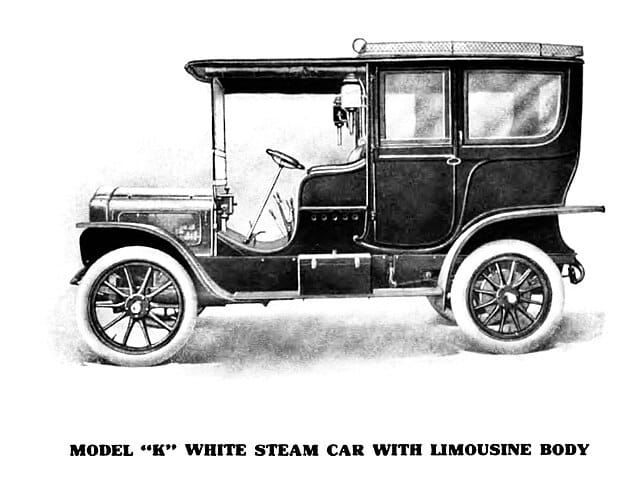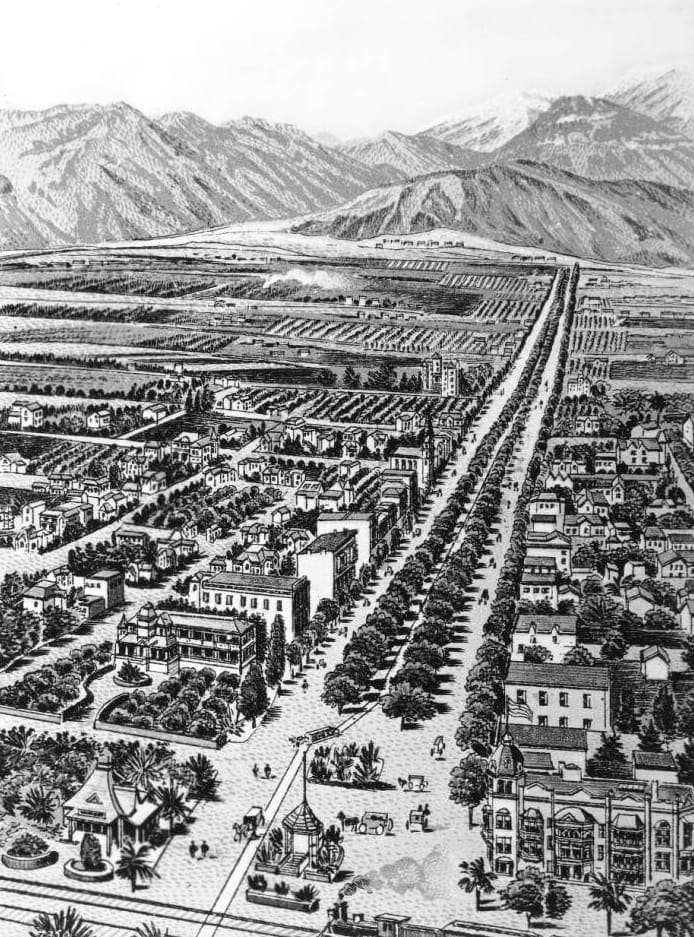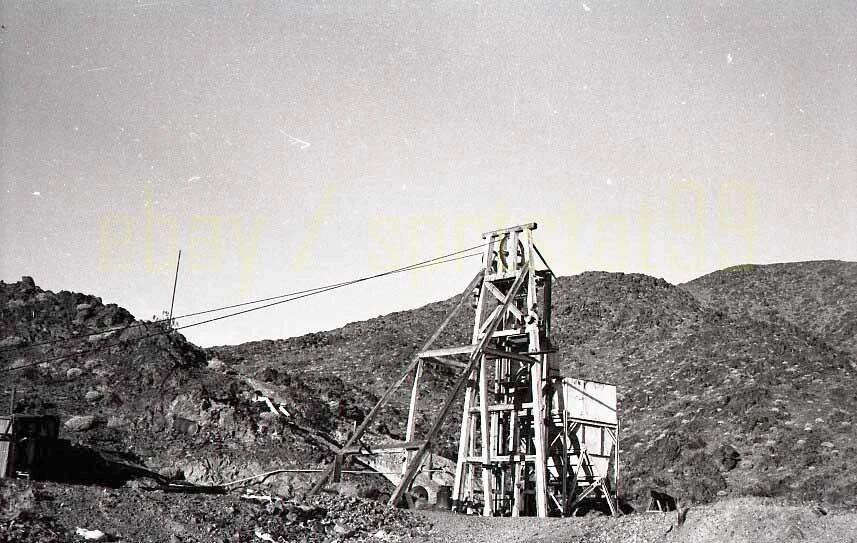Frank B. Devine: Pioneer of Riverside's Citrus Packing Industry
From New York businessman to Sunbeam brand founder, Devine shaped local citrus shipping for nearly four decades.
Ransom B. Shelden and his family learned the hard way in 1909 that even a well-packed White Steamer can’t escape misfortune. From a backfiring gas tank to a total loss, their fishing trip to San Antonio Canyon became an unforgettable adventure.

A fishing outing for a few days became quite costly for Ransom B. Shelden and his family. The party left Riverside as passengers in a White Steamer automobile on Saturday morning, May 1, 1909, for a camping and fishing trip to San Antonio Canyon. The big 1908 White Steamer automobile included Shelden, his wife Cardelia, his son Ransom P., two young ladies, and the chauffeur, Fred Harver. Filling up the large auto was a hamper with food, fishing gear, a rifle, overcoats, and other needed supplies.
Rollin White, the son of the founder of White Motor Company, developed the White Steamer. Rollin created a special water-tube steam generator in which the coils were all joined at the top, allowing the water to flow only when pumped, thereby providing better control. His invention also operated a superheated unit, taking advantage of the steam’s higher temperatures. The first cars were offered to the public in April 1901. In 1907, President Teddy Roosevelt allowed his Secret Service to use a White Steamer to follow his horse-drawn carriage. The last car was built in January 1911 as the company transitioned to gas-powered vehicles.
R. B. Shelden had purchased the White Steamer eleven months before the outing and had already put 17,000 miles on it. The seven-passenger touring car with a Pullman body cost approximately $5,000. The machine performed flawlessly, without even a spring breaking.


From left to right: Drawing of a 1908 White Steam Car, Model K, similar to Shelden’s auto, Lithograph of Euclid Avenue from downtown Ontario to the mountains of San Antonio Canyon. (Public Domain)
That changed as the party traveled north of Ontario on Euclid Avenue. At the head of Euclid, at a turn in the road, the driver realized something was wrong. Steam was pouring out of the front of the vehicle. Harver alighted from the car to investigate and discovered that a pipe from the gas tank had broken, causing a leak. The turn off Euclid brought the party into the path of a wind coming off the canyon, which caused a backfire that ignited the flame. The automobile had fifty pounds of air pressure on the tank containing four gallons of gasoline and fifteen gallons of distillate. Harver attempted to shut off the fuel supply but could not and suffered burns.
Recognizing the danger, Shelden ordered everyone to abandon the car and retreat a safe distance from the flames. They watched as the fire consumed their ride and were unable to rescue any of their belongings.
The grease on the vehicle provided more fuel for the flames. The fire consumed the car, and less than 30 minutes after the fire started, the tank exploded. The car's aluminum body melted under the intense heat “like so much butter in a frying pan.” All that remained was a mass of blackened iron.
Shelden and his party returned to Ontario by trolley and from there caught the Salt Lake Route train back to Riverside.
Upon returning to Riverside, Shelden contacted B. B. Bush, the local insurance agent through whom he had an Aetna Insurance policy on the car. Shelden and Bush returned to the disaster scene and viewed the ruins. The policy covered life and accidents in automobiles, and the question was whether these were covered under the policy or not. They thought that the engine might be salvageable, but that was all. The driver, Harver, left his watch on the seat, and its remains were found, having stopped at 9:10, indicating the time of the inferno.
Ransom Bird Shelden was born on June 10, 1852, at Portage Entry, Houghton County, Michigan, to Ransom and Theresa Shelden. He was the first white male child born in Houghton County, encompassing much of Michigan's Upper Peninsula. His father, Ransom Sr., developed several copper mines in the area, promoted traffic along the Portage Canal, and established the First National Bank of Houghton. Ransom Jr. worked in the family businesses. He also ran a dry goods store and served as deputy internal revenue collector at Houghton. He married Cardelia Ann Paull of Dodgeville, Wisconsin, in Houghton on August 22, 1873. A son, Ransom Paull, was born October 28, 1874.
The family moved to Riverside in 1893 (B&B, p. 972), where his daughter, Theresa, was born on August 15, 1897. They initially lived at the Wood McKnight place along the Gage Canal on Riverside’s Eastside. He tended an orange grove at Highgrove and Palmyra avenues. Wishing to be closer to the downtown area, Shelden purchased a house on the corner of Fourteenth and Lime Streets in February 1899 from Frank E. Abbott. The large lot was 70 by 150 feet with good frontage on both streets. The house consisted of ten rooms and modern conveniences, including a cellar, furnace, gas, and electric lights. There was a barn, a corral, and a chicken coop on the grounds, along with wandering cement paths, lawns, and flowers.
Less than a year after moving into their new home, early on Sunday, Jan. 7, 1900, Mrs. Shelden woke her husband at 3:30 a.m. after hearing something downstairs. Mr. Shelden discovered that a burglar had been in the house and absconded with about $1,000 worth of jewelry. The thief had also eaten some food in the dining room and, having removed the cork from a bottle of beer, drank the beer. The Riverside Daily Press, following the burglary, commented that the act gave appropriateness to the ad run by the Orange Growers’ Bank, recommending safe deposit boxes in which to keep valuables.
With mining interests in Upper Michigan, Ransom Shelden broadened his investments and financed several projects in the Riverside area. He became a major stockholder in the Seal of God Mining Company, located in the Virginia Dale Mining District of northern Riverside County and southern San Bernardino County, east of Twentynine Palms. Nearby in the same mining district, he helped build a waterpower plant for the mines. In Riverside, he was a stockholder in the Riverside Fair Association and in the Elaine Oil Company, which had oil-bearing land near Elsinore. In the 1910 U.S. Census, his occupation was listed as “Own Income.”


From left to right: Photo of Mining in the Virginia Dale District, Cartoon Drawing of R. B. Shelden by Willard Cundiff in Who’s Who in Riverside. (Author’s Collection)
On Nov. 29, 1929, at the age of 78, Ransom Bird Shelden passed away. His body was cremated at Evergreen Cemetery in Riverside. He was survived by his wife, Cardelia, of 410 West Fourteenth Street; his son, Ransom Paull Shelden of Corona; and his daughter, Mrs. F. L. Thompson of Fort Benjamin Harrison, Indianapolis, Indiana.
Let us email you Riverside's news and events every morning. For free!